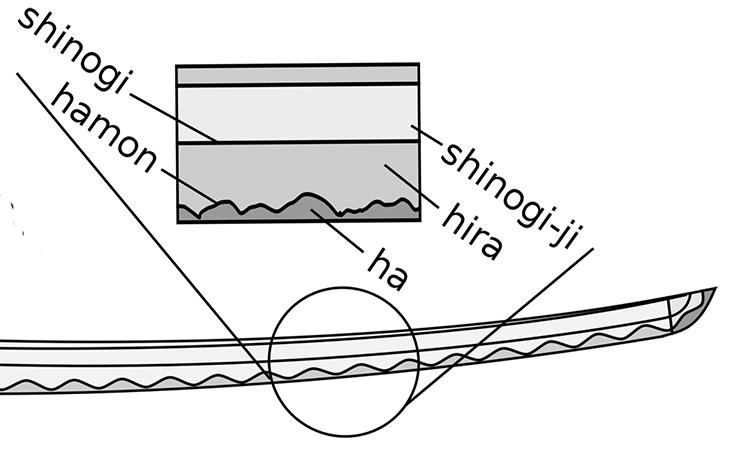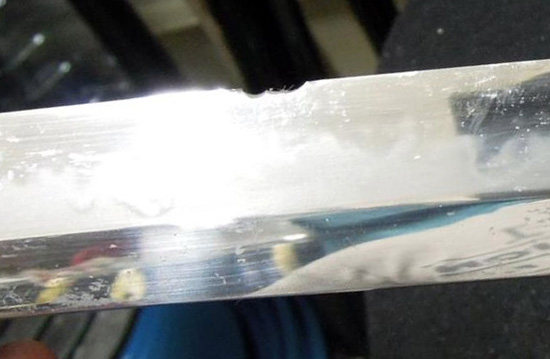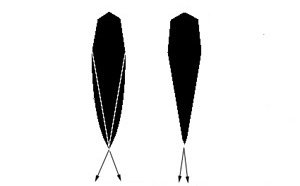Recent Articles
-
Christmas Sword Buying Guide 2025
Dec 03, 25 10:53 PM
Ha
 The 'ha' in relation to other parts of the blade
The 'ha' in relation to other parts of the bladeThe Ha, quite simply, is the cutting edge of a Katana and transitions into the "Hira" that is to say, the flat areas of the blade that slope to meet at the cutting edge.
When differentially hardened in the traditional way, the edge becomes much harder than the rest of the blade, and this hardness translates into cutting ability as much, if not more, than how sharp the blade is.
Indeed, a finely honed, extremely sharp edge is actually something of a liability, as the thinner the material, the more likely it is to chip, roll or simply fail to cut heavy targets - so a balance between sharpness and durability is required if the sword is to perform as it should.
 Example of a chipped ha
Example of a chipped haMany people feel that the ideal edge of a Katana is formed from a clamshell like edge geometry known as niku or hiraniku. This type of meaty edge displaces more material when it cuts, though may seem rather dull to casual inspection. But it is common mistake for beginners, especially those who have been brought up on the misconception that a Katana should be razor sharp, to think that a blade that seems dull cannot cut - for a sword with niku is designed to cleave through human flesh and bones and after a few cuts, the beginner learns to respect this blade geometry.
 Left a sword with 'niku' creating a wider and deeper cut that the blade geometry on the right, which is also more fragile than a blade with 'meat'
Left a sword with 'niku' creating a wider and deeper cut that the blade geometry on the right, which is also more fragile than a blade with 'meat'A properly hardened edge will hold up to a lot of cutting, but
eventually will wear down and need re-sharpening no matter how good the
steel is. Below is a DIY method to do exactly that.
I hope this information on the ha has been helpful. To return to Samurai Sword Terminology from Ha, click here

Buying Swords Online Can Be DANGEROUS!
Find the Best Swords in the:
Popular & Recommended ARTICLES

The ONLY true free online magazine for sword enthusiasts. Delivered once a month on the 1st day of the month, no filler and no BS, just the latest sword news & info delivered straight to your inbox.












